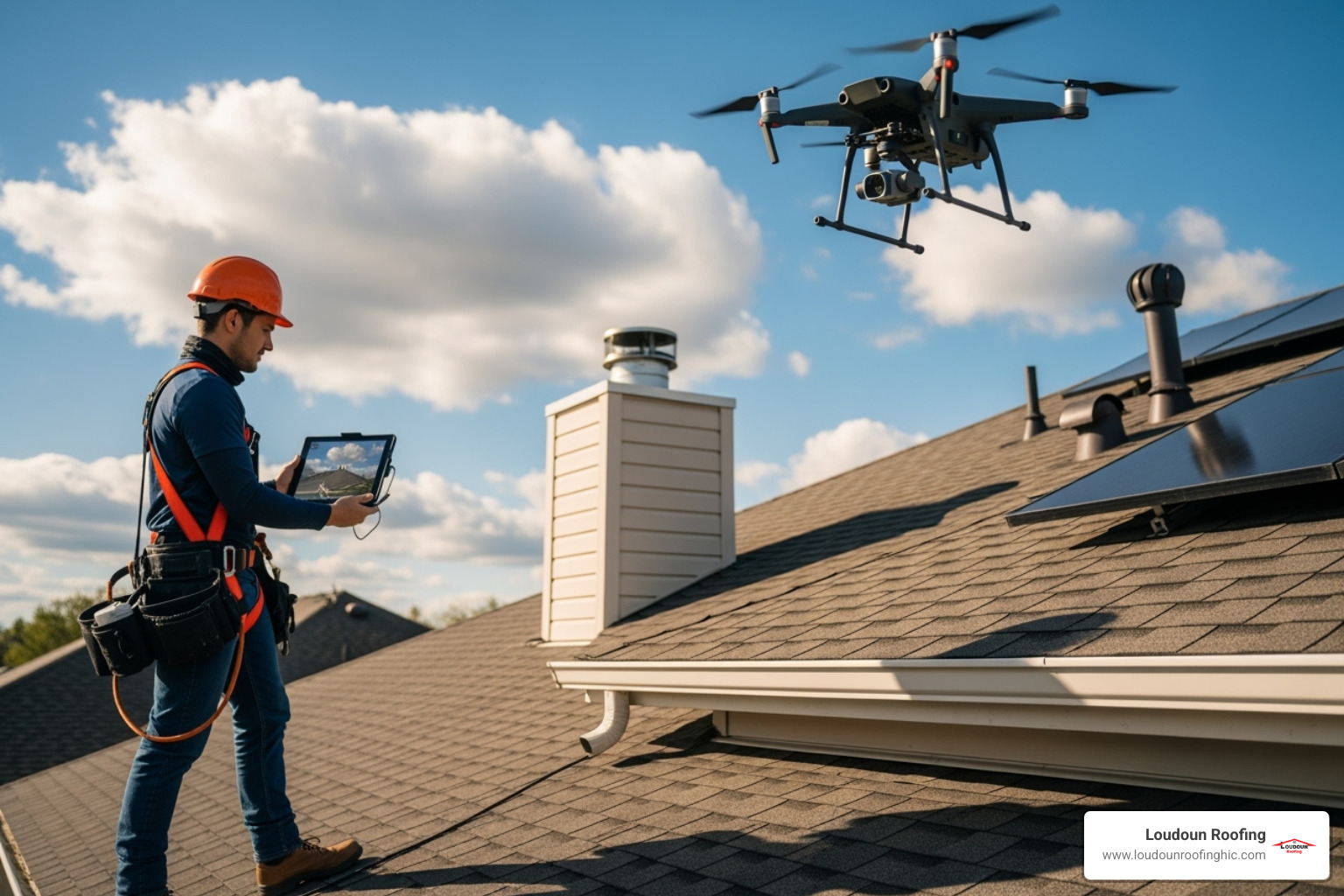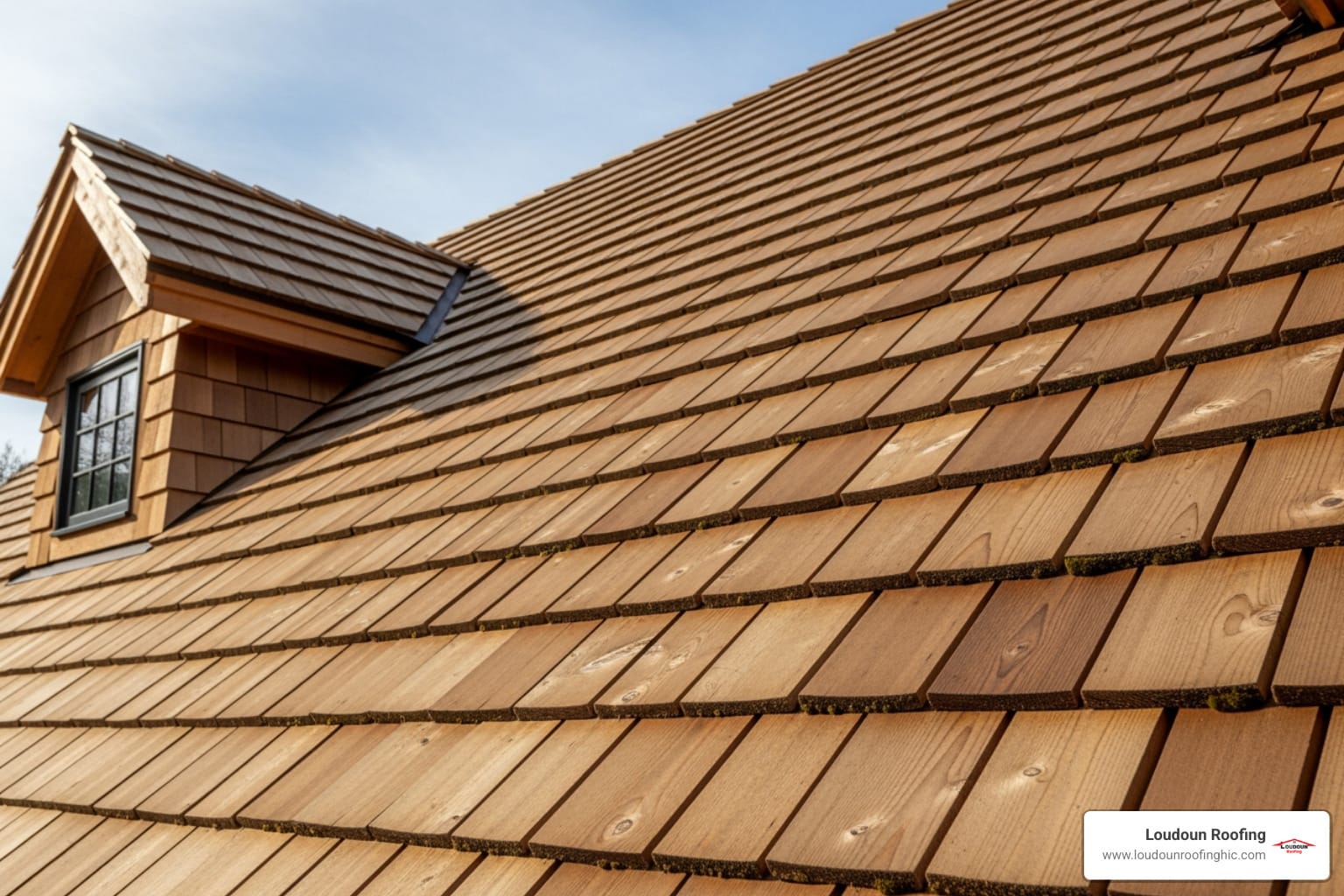Introduction
Managing a multi-family property like an apartment complex, condominium, or townhouse community in Northern Virginia comes with unique responsibilities, and roof maintenance is one of the most critical. A sound roof protects not just the building’s structure but also the residents who call it home. Unlike single-family homes, multifamily roofing repairs involve a greater scale, more stakeholders, and stricter regulations, requiring specialized expertise.
When you’re facing roof damage, you need a contractor who understands these complexities. For over two decades, Loudoun Roofing has provided comprehensive roofing services for Northern Virginia, helping property managers and HOA boards steer the repair process with minimal disruption. Whether you need an emergency leak fix or are planning a full replacement, our team is ready to help. For immediate assistance, call us at (571) 702-2569.
Why Multi-Family Roofing Demands Specialized Expertise
Multi-family roofing projects are inherently more complex than their single-family counterparts. The challenges extend far beyond just a larger roof area. Successfully managing these projects requires a deep understanding of the unique logistical, regulatory, and human elements involved.
Key differences between multifamily and single-family roofing repairs:
- Scale: Larger roofs require more materials, a bigger crew, and a longer project timeline.
- Stakeholders: Communication must be coordinated between property managers, HOA boards, tenants, and owners.
- Disruption: Work must be planned to minimize noise, debris, and access issues for dozens or hundreds of residents.
- Regulations: Multi-family properties are subject to stricter commercial building codes and OSHA safety protocols.
- Costs: Higher material volumes, specialized equipment (like cranes), and increased labor needs result in larger budgets.
- Complexity: Roofs often feature multiple penetrations, such as HVAC units, vents, and skylights, each a potential point of failure.
Navigating these factors demands a contractor with proven experience in multi-family roofing. A well-executed project not only repairs the damage but also protects the community’s peace of mind.
Common Issues Affecting Multi-Family Roofs
Multi-family roofs, especially the flat or low-slope designs common on apartment buildings, face a distinct set of challenges. Proactive property managers should be aware of these common issues to catch problems before they escalate.
- Water Intrusion and Leaks: The most frequent problem, leaks can originate from cracked shingles, damaged membranes, or failing flashing. If left unaddressed, water intrusion leads to interior damage, mold growth, and compromised structural integrity.
- Ponding Water: Flat roofs are prone to collecting standing water after rain. This “ponding” adds significant weight and stress to the roof structure, accelerating the deterioration of roofing materials.
- Roof Membrane Damage: The waterproof membrane on flat roofs can be damaged by UV exposure, foot traffic, or punctures from debris or dropped tools. Even small tears can compromise the entire system.
- Storm Damage: Northern Virginia’s weather, from high winds to heavy snow and hail, can cause significant harm, including missing shingles, granule loss, and punctures.
- Aging Materials: All roofing materials have a finite lifespan (typically 15-30 years). As a roof ages, materials become brittle and less effective, leading to a cycle of constant repairs.
- Failing Flashing and Sealants: The metal flashing and sealants around vents, chimneys, and skylights are common failure points. When they crack or corrode, they create direct pathways for water to enter.
- HVAC System Issues: Rooftop HVAC units require regular maintenance, leading to foot traffic that can wear down the roof surface. Improperly installed units can also create structural stress and leak points.
Regular inspections are key to identifying and addressing these issues. For specialized systems, consider a professional commercial flat roof repair service.
Signs Your Multi-Family Roof Needs Repair
Detecting roof problems early can save your community thousands of dollars in damages and extend the life of your roof. Property managers and HOA board members should be vigilant for these warning signs:
- Leaks and Water Stains: The most obvious red flag. Stains on ceilings or walls, especially after rain, indicate an active leak that needs immediate attention.
- Missing or Damaged Shingles: Visually inspect the roof for shingles that are cracked, curling, buckling, or have been blown off. These are weak spots where water can penetrate.
- Sagging Roof Areas: Any noticeable dip or droop in the roofline is a serious concern. It can signal underlying structural damage from trapped moisture and requires an urgent professional assessment.
- Sudden Rise in Energy Bills: A compromised roof with damaged insulation or poor ventilation can lead to significant energy loss, causing heating and cooling costs to spike.
- Mold or Algae Growth: Dark streaks (algae) are often cosmetic, but patches of mold or mildew, especially in attic spaces, point to a moisture problem.
- Granules in Gutters: Finding a large amount of shingle granules in the gutters is a sign that the asphalt shingles are aging and losing their protective layer.
- Visible Damage After a Storm: Always inspect the roof after a major storm for detached flashing, damaged vents, or other new signs of wear.
If you’re unsure does your multi family building need roof repair, it’s always best to schedule a professional inspection.
The Typical Process for Multifamily Roofing Repairs

A professional approach to multifamily roofing repairs follows a structured process to ensure clarity, safety, and minimal disruption for residents. Here’s what you can expect when working with an experienced contractor:
- Initial Inspection and Assessment: The process begins with a thorough evaluation of the entire roofing system. We use advanced tools like drones and infrared cameras to identify both visible and hidden damage, such as trapped moisture under the roof membrane. This ensures we diagnose the root cause of the problem, not just the symptoms.
- Detailed Diagnosis and Estimate: After the inspection, you will receive a comprehensive report with photos, a clear explanation of the findings, and an itemized estimate. This transparent proposal outlines the exact scope of work, the materials to be used, and a projected timeline, allowing you to make an informed decision.
- Communication and Planning: This step is critical for multi-unit properties. We work directly with property managers and HOAs to create a detailed work plan. This includes scheduling, resident notifications about noise and access, parking logistics, and establishing clear communication channels to address any concerns.
- Repair Work Execution: Our certified technicians carry out the repairs according to manufacturer specifications and local building codes. We prioritize safety for both our crew and your residents, maintaining a clean and organized job site. Each day, the work area is secured and cleaned to minimize inconvenience.
- Final Inspection and Maintenance Plan: Upon completion, we conduct a final walkthrough with you to ensure the work meets your expectations. We also provide a detailed maintenance plan with recommendations for extending the life of your roof, helping you protect your investment for years to come.
A thorough roof inspection is the foundation of any successful repair project.
Key Factors Influencing the Cost of Multifamily Roofing Repairs
Budgeting for multifamily roofing repairs requires a clear understanding of the factors that determine the final cost. Unlike single-family homes, these projects involve several variables that can significantly impact the price.
- Roof Size and Complexity: The total square footage is the most direct cost factor, as it dictates the amount of material and labor needed. Additionally, complex designs with multiple gables, dormers, steep slopes, or numerous penetrations (vents, pipes, HVAC units) require more time and specialized labor, increasing the cost.
- Roofing Material Type: The choice of material plays a major role. Standard asphalt shingles are generally the most affordable option. However, materials common on multi-family buildings, such as TPO, EPDM, or modified bitumen membranes, have higher upfront costs for both materials and installation.
- Extent of Damage: A simple repair for a few missing shingles is far less expensive than addressing widespread issues. If water has penetrated the roof deck, causing rot or structural damage, the cost will rise substantially as these underlying layers must also be repaired or replaced.
- Accessibility: The height of the building and ease of access to the roof affect labor costs. A multi-story apartment building may require cranes, lifts, or extensive scaffolding to safely move materials and workers, adding to the project’s expense.
- Labor and Expertise: Commercial roofing requires skilled technicians experienced with specific materials and safety protocols. The size of the crew and the duration of the project are significant cost components.
- Permits and Code Compliance: Multi-family properties are subject to commercial building codes, which are more stringent than residential ones. The cost of permits and ensuring all work meets these standards is factored into the final price.
For a detailed estimate on your property, contact a professional for a roof repair in Loudoun County.
When to Repair vs. When to Replace Your Roof
One of the most challenging decisions for a property manager or HOA board is whether to continue with repairs or invest in a full roof replacement. While repairs offer a lower upfront cost, a replacement can provide better long-term value and prevent a cycle of recurring issues. The right choice depends on several factors.
| Factor | Repair is Recommended | Replacement is Recommended |
|---|---|---|
| Age of Roof | Less than 10-15 years old with plenty of remaining lifespan. | Approaching or past its expected lifespan (e.g., 20+ years for shingles). |
| Extent of Damage | Damage is isolated to a small area (less than 30% of the roof). | Damage is widespread, or there are multiple leaks in different areas. |
| Cost Analysis | The cost of repair is a small fraction of the replacement cost. | The cost of repairs is 50% or more of the cost of a new roof. |
| Repair History | This is the first or second time the roof has needed a repair. | The roof requires frequent, recurring repairs year after year. |
| Future Plans | You need a short-term fix while budgeting for a future replacement. | You want to increase property value for a sale or refinancing. |
A professional assessment is the best way to determine the most cost-effective solution. An honest contractor will help you analyze these factors and decide whether a targeted repair or a full roof replacement is the right investment for your property.
Best Practices for Roof Longevity and Contractor Selection
Proactive maintenance and choosing the right contractor are the two most important factors in maximizing the lifespan of your multi-family roof and avoiding costly emergency repairs.
Best Practices for Maintaining Your Roof
Regular maintenance helps identify and address minor issues before they become major problems. A consistent schedule can save thousands in the long run.
- Schedule Regular Inspections: Have a professional inspect your roof at least twice a year (spring and fall) and after any major storm.
- Keep it Clean: Remove leaves, branches, and other debris from the roof surface and gutters. Clogged gutters can cause water to back up under shingles or on flat roof edges.
- Address Small Issues Promptly: Don’t ignore a small leak or a few missing shingles. Quick action prevents water from seeping into the building’s structure.
- Control Roof Traffic: Limit foot traffic on the roof to authorized personnel only to prevent accidental damage to membranes or shingles.
A dedicated roofing maintenance plan is the most effective way to protect your investment.
How to Choose an Experienced Multi-Family Roofing Contractor
Not all roofers are equipped for the demands of multi-family projects. Use this checklist to find a qualified partner:
- Verify Multi-Family Experience: Ask for a portfolio of similar projects, such as apartment complexes, condos, or HOAs.
- Check Licensing and Insurance: Ensure they have the proper commercial licensing and liability insurance to protect your property.
- Ask for Local References: A reputable contractor should be able to provide references from other property managers in your area, like those in Leesburg.
- Get Detailed, Written Proposals: Vague estimates are a red flag. A professional proposal will detail the scope of work, materials, timeline, and costs.
- Understand the Warranty: Clarify what the manufacturer’s warranty and the contractor’s workmanship warranty cover.
Finding the right local commercial roofer is crucial for a successful project.
Frequently Asked Questions about Multifamily Roofing Repairs
What makes multi-family roofing more expensive than single-family roofing?
Multi-family roofing projects are inherently larger in scale, requiring more materials, labor, and specialized equipment like cranes. The logistical complexities of working around tenants, coordinating with HOAs, and adhering to stricter commercial building codes and safety regulations also contribute to higher costs compared to a standard single-family home.
How often should a multi-family roof be inspected?
A multi-family roof should undergo a professional inspection at least twice a year, typically in the spring and fall. Additionally, an inspection is crucial after any severe weather event, such as a hailstorm, high winds, or heavy snowfall, to identify and address any potential damage immediately before it can worsen.
Who is responsible for roof repairs in a condo or townhouse community?
Responsibility for roof repairs typically depends on the governing documents of the Homeowners Association (HOA) or condominium association. In most cases, the association is responsible for the roof as it is considered a “common element.” However, it is essential to review your community’s specific bylaws to confirm liability and procedures for initiating repairs.



